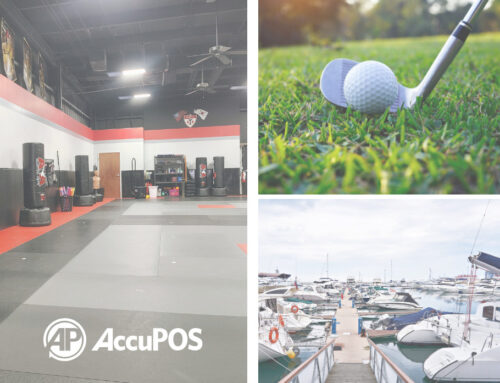It is difficult to assign exact numbers to a problem like theft in the bar industry because it often goes undiscovered or unreported. The National Restaurant Association however, estimates that at least four cents of every dollar spent in American restaurants is consumed by employee theft. Other studies have estimated that between 40% and 62% of employees have stolen from their workplace at one time or another.
Regardless of the statistics, anyone with experience in the industry will be aware of just how common employee theft is behind the bar. Most bartenders will almost certainly have at least a few stories of inventive theft methods and former colleagues caught (or not caught) in the act. This tacit acceptance of the problem as being just “part of the industry” is to some extent what makes it such a difficult problem to deal with.
The feeling among many managers and owners is that things like stock shortages and missing cash are just something that happens in the fuzzy areas of late night cash-ups and irregular stock takes. Many bars however, operate with fairly relaxed procedures when it comes to stock and cash control and accountability and it is often these bars that struggle the most with “stock shrinkage”. On the flip side, establishments that take even basic steps to discourage and prevent theft are proven to decrease losses substantially.
For this reason, it is vitally important to create a culture where employees don’t feel like it is something they can get away with and know that the consequences are severe if they are caught.
In this article we’ll take a look at a selection of ways you can go about preventing theft in your establishment.
This can be broken into three steps:
Step 1: Prevention is better than cure
As mentioned, the first line of defense against theft is to create a workplace culture where, as much as possible, employees don’t want to steal from the business. It is also important to remember that a large amount of theft in bars is not necessarily a result of malicious thieving but often comes from the convivial atmosphere and blurred lines of many bar environments where employees may feel it is acceptable to pour themselves or a friend a free drink.
- Culture: Create a culture of accountability and discipline among your team. This can run to things like zero tolerance towards drinking on the job (imagine how much easier it might be to pocket that cash after a few shots) to conducting constant pour accuracy tests. The feeling that the whole team is well disciplined and management is paying attention to what they do behind the bar is often a strong incentive for bartenders to keep on the straight and narrow.
- Understanding: Involve your staff in business performance indicators like cost of sales and weekly liquor spend and demonstrate how stock shortages affect the bottom line. A lot of theft comes from simply not understanding how big the impact of “just this one” can be.
- Trust: Hire staff you trust. Conduct reference checks and look out for bartenders that have hopped between multiple jobs in quick succession. Trust your gut feeling about people and listen to other team members if they think something is suspicious. Remember that it’s often the best and most experienced bartenders that are most guilty.
Step 2: Make it hard to steal
Once you’ve done your best to make sure your employees don’t want to steal from you, the next step is to make sure they can’t. Implementing systems and physical barriers to theft will go a long way to reducing bar theft. The extent of these measures will be dependent on the extent to which you believe you are suffering from theft as well, as your budget for these measures.
- Systems: Thorough and closely monitored inventory and cash systems create an environment where employees will think twice before stealing. This simple step is often enough of a deterrent to discourage all but the most determined thieves.
- Lock it up: Keep extra stock locked away and limit the number of keys in circulation to only trusted and essential staff.
- Eye in the Sky: A good CCTV system is a vital element in both deterring theft and catching it.
- Undercover investigators posing as guests or even just careful observation of your bar can also be great for picking up irregularities.
- POS: Digital Point of Sale systems are far less susceptible to manipulation and unauthorized actions than traditional cash registers.
Step 3: Catch Them in the Act
Once all these preventative measures are in place, the below list should help you identify some of the more common methods of stealing from the bar. This is not an exhaustive list as scams like these are constantly changing and evolving however many will be variations on these core practices.
| How it’s done? | How you catch it | How you stop it |
|---|---|---|
| Watered down spirits
Spirits are diluted with water (or sometimes a cheaper brand) to mask the loss of stolen stock. |
|
|
| Bringing in bottles
A bartender will bring in his own bottle of a particular brand (usually fast-moving house brands) and essentially “sell” his own stock in your bar. |
|
|
| Giving out free drinks to friends, family and regulars
This is one of the most common forms of theft. It is often not intended maliciously but comes from a “just this one can’t hurt” mentality. |
|
|
| Theft of bulk stock
Stealing full bottles (or even cases) of stock for resale or personal use. |
|
|
| Over or under pouring
Losses due to intentional or unintentional inaccurate pouring of liquor. Eg. Pouring a stronger drink for a friend and making up for it by short pouring another guest. |
|
|
| Cash theft
Simply pocketing cash from the till or tip jar. |
|
|
| Not ringing up drinks
Serving a drink and either immediately pocketing the cash or ringing up a cheaper item and pocketing the profit. |
|
|
| Voids
Adding additional items to a bill and then voiding them from the bill once it has been paid. |
|
|





